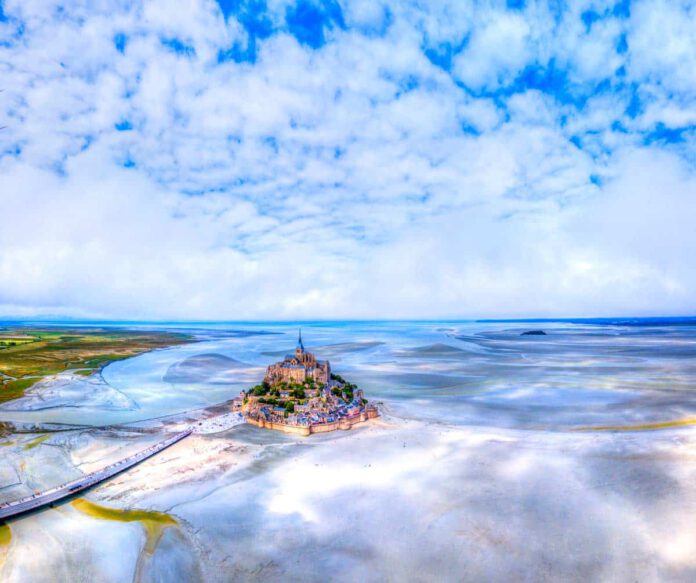During the equinox, the sea at Mont Saint-Michel reaches record heights. A few hours later, the ebb reveals a landscape of sandbanks, riverbeds, and quicksand. A walk through an exceptionally dynamic bay.
The water rushes quickly and steadily into the bay. From the ramparts of Mont Saint-Michel, visitors watch as the tidal wave advances, eventually undermining the bridge and shrinking the space at the foot of the mountain. People stand above in silence and almost reverence. Today, this natural phenomenon might be as impressive as the sight of the pilgrimage destination after a long and perilous journey, through swamps, mud, and quicksand on the final stretch. Down below, the undecided ponder whether to head to the monastery or the bridge. The water is already ankle-deep; some go left, others go right. The bridge, connecting the mainland and the mountain since 2014 instead of the 19th-century dam, now ends in water. Mont Saint-Michel becomes an island—for an hour.
The recurrence of this phenomenon since 2014 is the result of a project of Herculean proportions. Previously, the bay was so heavily silted that the monastery island was at risk of silting up. In the mid-1990s, the €184 million project to “restore the maritime character” of the mountain was planned and set in motion by the state and region in 2006. The dam and car park, which had led to the silting of the bay alongside the drainage of coastal areas and the canalization of the Couesnon, were dismantled. Mud was dredged from the bay, and a dam was placed in front of the Couesnon estuary. The tidal dam releases retained seawater with pressure during high tide, sweeping sand and sediments out of the bay. Today, the mountain can be reached via the elegant, 760-metre-long stilt bridge—on foot, by shuttle bus, or by horse-drawn carriage. And occasionally, the tide rushes back into the bay.



